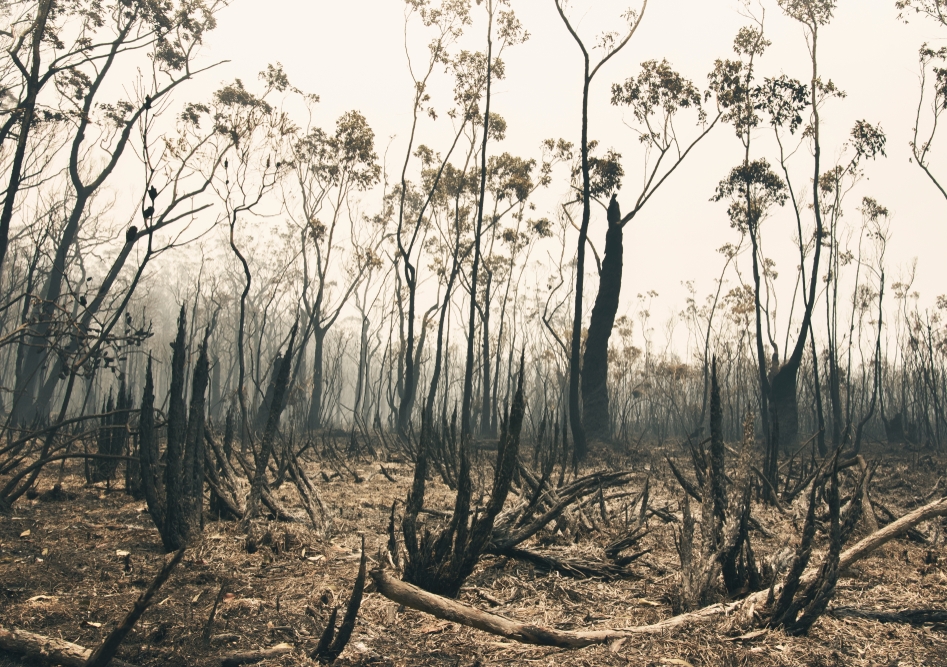Building advice for bushfire prone zones: "Design sensibly and for the long term"
The Dean of UNSW Built Environment says it’s possible to build more fire resistant homes, but designs need to use best practice principles to be resilient.
The Dean of UNSW Built Environment says it’s possible to build more fire resistant homes, but designs need to use best practice principles to be resilient.

It is possible for residents to rebuild in bushfire affected zones, the Dean of UNSW Built Environment, Professor Helen Lochhead says.
But the designs need to be well located and designed, in line with the Australian Standard, AS3959 Construction of buildings in bushfire-prone areas, and using best practice planning principles.
“In the majority of cases, we can design much better, more fire resistant, more sustainable and climate responsive houses, than what we are doing today,” Professor Lochhead says.
The Dean’s comments come after more than 800 homes were lost in the recent bushfires on the NSW south coast.
Urban planners and architects have warned that not everywhere may be suitable for reconstruction because of the elevated risk in a changing climate.
The Dean says one of the first considerations in rebuilding is assessing the suitability of the site.
“There are locations where it’s probably not appropriate to rebuild,” Professor Lochhead says. “For example, if your home is in a remote location, with one road in, surrounded by bush and without any support infrastructure, or any potential for a fire break, that’s obviously a very vulnerable location to rebuild.
“On the other hand, more effective solutions may require people working together. If you’re part of a settlement that was affected, communities can and should be part of the future planning and decision-making process so investment and reconstruction benefits the broader community. For example, it may be possible to build back safer more community infrastructure and put in fire breaks in public spaces to protect housing against future fire travel in the future.”
Professor Lochhead says that any rebuilding should be done responsibly, rationally and using common sense. Appropriate analysis of current and future conditions is key.
“We need to promote sustainable, resilient housing, which is good for the majority of people and suits the majority of situations,” Professor Lochhead says.
She says people planning to rebuild should include a range of considerations, such as an adequate clearing around the house, self-cleaning gutters, and fire resistant decking on verandahs.
The underside of buildings should be enclosed so embers don’t get trapped underneath the floor, and in more isolated areas there should ideally be adequate stored water, whether tanks, pools, ponds or dams, to fight fires if they do occur.
“(Other considerations include) using fire resistant materials. Non-flammable materials such as masonry, brickwork or rammed earth, and concrete as opposed to timber. This doesn’t mean you can’t use timber, but you might use it on the inside rather than the outside of buildings in these of locations.”
UNSW Professor of Practice and architect Glenn Murcutt is renowned for designing homes which respond to climatic conditions such as risk of wildfire.
A home he designed for the Palm Beach peninsula which is surrounded by bushland features blackened zinc panels, concrete steps and foundations, and plywood walls which are covered by metal skin.
There are also windows made from toughened mesh-covered glass and anodized aluminium frames to protect against embers, and water storage tanks for the laundry which can also be used to put out fires.
Professor Lochhead says these design considerations are more sustainable and cost effective in the long term and many architects are already onboard and designing this way in fire prone areas.
“We’re not promoting buildings that are beyond the reach of the average person. We’re just talking about designing sensibly, sustainably and for the long term, acknowledging the climate and environment which we live in.”
Professor Lochhead says the disaster has created opportunities to put new policies in place and create new ways of doing things.
“People have certainly demonstrated an appetite to change and build back differently if it will be better,” she says.
“I think it’s time for researchers, but also for practitioners to demonstrate their value in helping to educate, plan and design a better built environment adaptive to future needs. And that’s where architects, planners and engineers have a very strong part to play.”
Professor Lochhead is also President of the Australian Institute of Architects which has provided free access to their acumen practice notes, a resource base for building in bushfire prone zones.
The Institute is also providing pro bono architectural services for bushfire affected homeowners.
“We’re collating a database of architects across the country willing to provide pro bono services, together with a database of people in need of architects,” she says.
“In these early stages of recovery, architects will be listening to peoples’ immediate and long-term needs and may only be providing advice. This could be whether it’s practical and feasible to repair or whether rebuilding, and perhaps differently or elsewhere are better options.
“At this point most people are in recovery. They’re trying to figure out what they’re going to be doing next. Rebuilding will take some time, and for many people, it may take years.”